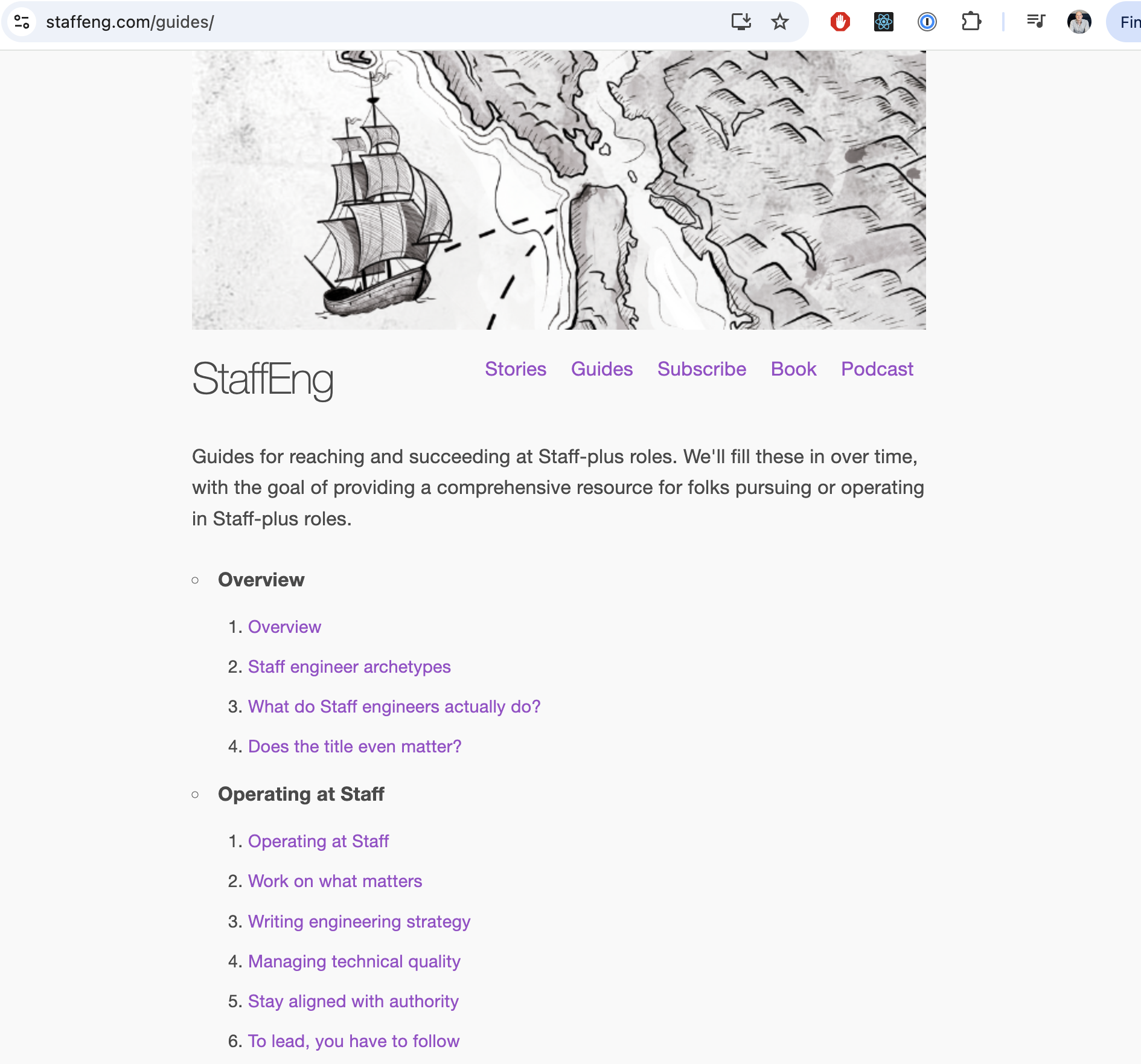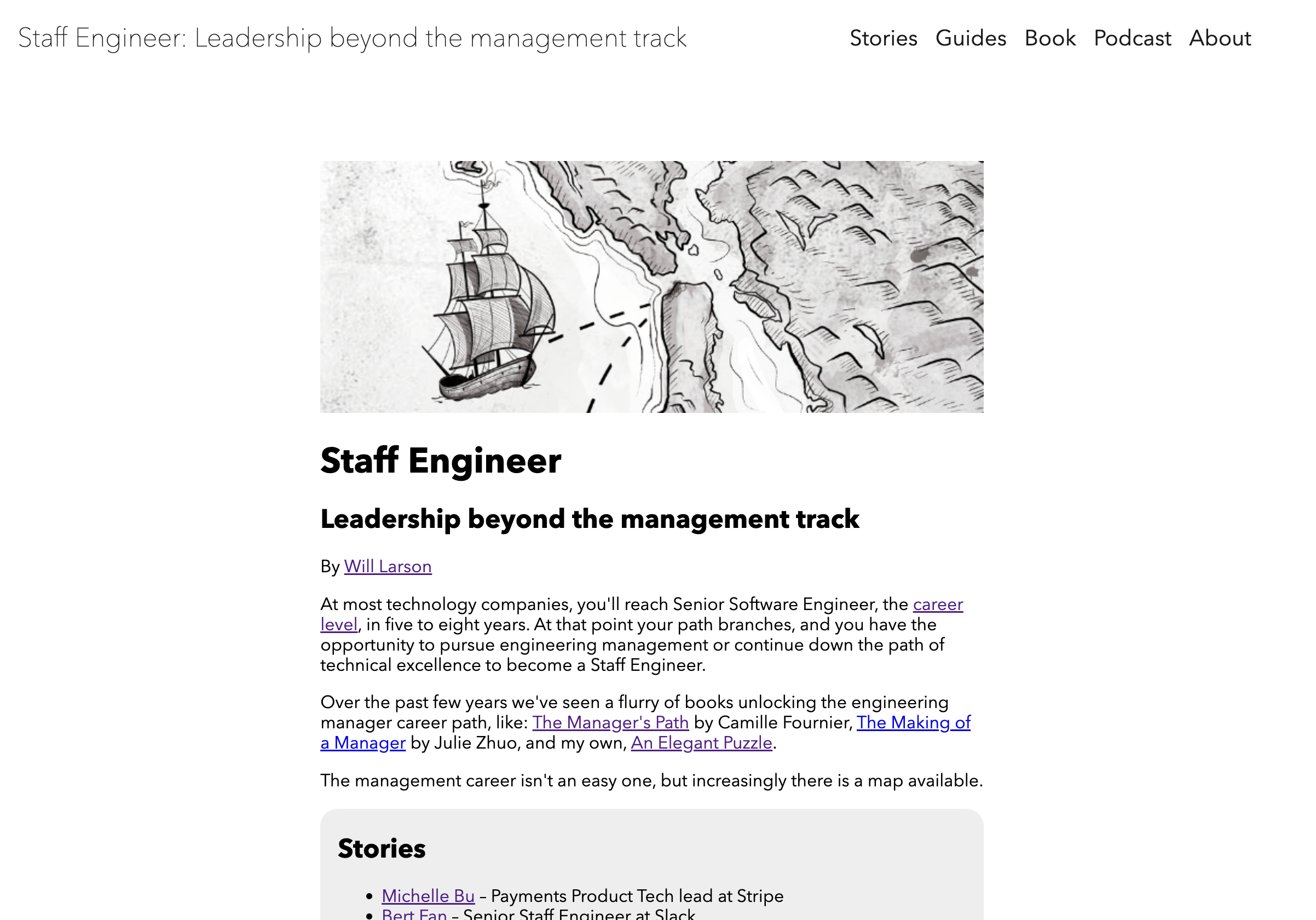Refreshed StaffEng.com and a few other sites
Ahead of announcing the title and publisher of
my thus-far-untitled book on engineering strategy
in the next week or two, I put together a website for its content.
That site is pretty much the same format as this blog,
but with some improvements like better mobile rendering on / than this blog has historically had.
After finishing that work, I ported the improvements back to lethain.com, but also
decided to bring them to staffeng.com.
That was slightly trickier because, unlike this blog, StaffEng was historically a Gatsby app.
(Why a Gatsby app? Because Calm was using Gatsby for our web frontend and I wanted to get some experience with it.)
Over the weekend, I took some time to migrate to Hugo and apply the same enhancements.
which you can now see in the lethain:staff-eng
repository or on staffeng.com.
Here’s a screenshot of the old version.

Then here’s a screenshot of the updated version.

Overall, I think it’s slightly easier to read, and I took it as a chance to update the various links. For example, I removed the newsletter link and pointed that to this blog’s newsletter instead, given that one’s mailing list went quiet a long time ago.
Speaking of going quiet, I also brought these updates to infraeng.dev, which is the very-stuck-in-time site for the book I may-or-may-not one day write about infrastructure engineering. That means that I now have four essentially equivalent Hugo sites running different content websites: this blog, staffeng.com, infraeng.dev, and the site for the upcoming book. All of these build and deploy automatically onto GitHub Pages, which has been an extremely easy, reliable workflow for me.
While I was working on this, someone asked me why I don’t just write my own blog server to host my blogs. The answer here is pretty straightforward. I’ve written three blog servers for my blog over the years. The first two were in Python, and the last one was in Go. They all worked well enough, but maintaining them was eventually a pain point because they required a real build pipeline and deal with libraries that could have security issues. Even in the best case, the containers they run in would get end-of-lifed periodically as Ubuntu versions got deprecated.
What I’ve slowly learned from that is that, as a frequent writer, you really want your content to live somewhere that can work properly for decades. Even small maintenance costs can be prohibitive over time, and I’ve seen some good blogs disappear rather than e.g. figure out a WordPress upgrade. Individually, these are all minor, but over decades they can really add up. This is also my argument against using hosted providers: I’m sure Substack will be around in five years, but I have no idea if Substack will be around in twenty years, but I know that I’ll still be writing then, and will also want my previous writing to still be accessible.